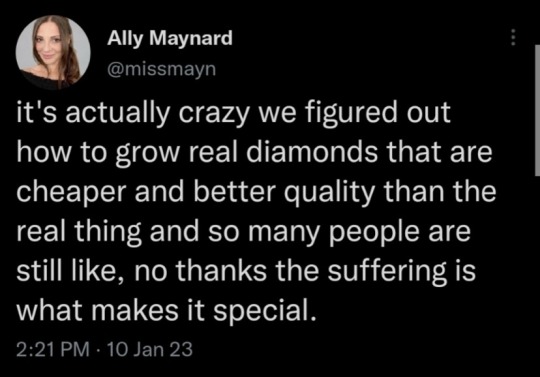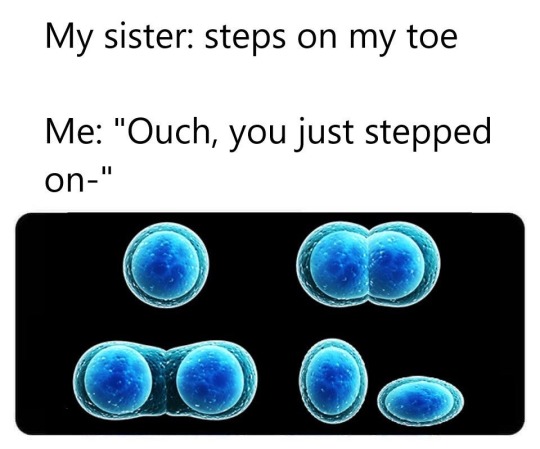#Science
Explore tagged Tumblr posts
Text

#modern day#modern day slavery#slavery#African#mines#diamonds#diamond mines#real diamonds#science#disgusting#the upper class#rich people#Twitter#tweet#save the children#protect children#from corrupt higher ups#powerful people#evil#evil people#Africa#miners#stupid#society#culture#society and culture#history#poverty
19K notes
·
View notes
Text

Admitting that the shifty fish has managed to evade detection by mankind for thousands of years, researchers at the University of Michigan Museum of Paleontology discovered Wednesday that the coelacanth successfully faked its own extinction in order to escape a massive gambling debt. “For years we thought all but one related species was gone from this planet forever, but after recent discoveries, we now know it had gone into hiding in the Indian Ocean because it was in deep with some pretty rough customers,” said research professor Marcus Zambrano, who claimed the rare fish only resurfaced recently after it had built a new life for itself and was sure the heat had died down.
Full Story
769 notes
·
View notes
Text
Scientists shouldn't have to pretend they're bringing back the dire wolf. Geneticists should be able to say "I want to make wolves larger for no reason", and we should have the resources to say "that sounds cool as hell. Here's a billion dollars"
24K notes
·
View notes
Text

Orion, The Hunter
621 notes
·
View notes
Text

The spiraled arm of NGC 1961 appears to be stretching toward us like a curious octopus. Observations from the Hubble Space Telescope show the far side of the galaxy isn’t as illustrious as the side facing Earth. It has just a few wisps of gas and stars, and lacks a similarly impressive spiral arm.
This galaxy, also known as Arp 184, sits about 190 million light-years away in the constellation Camelopardalis (the Giraffe).
Credit: ESA/Hubble & NASA, J. Dalcanton, R. J. Foley (UC Santa Cruz), C. Kilpatrick.
236 notes
·
View notes
Text

It's Fossil Friday! Meet Eryops megacephalus. This critter, which lived some 280 million years ago during the Early Permian, was among the most terrestrial of the early tetrapods. How do we know this? It has well-developed limbs, and evidence of trackways made by it or a close relative suggests that this species walked on dry land. This species has large, tusklike teeth on the palate, with smaller teeth around the edge of the mouth, indicating it was a predator.
See this prehistoric critter and more at the Museum! Plan your visit.
Photo: © AMNH
966 notes
·
View notes
Text
This is an especially frustrating element of any social science research. Like, yes, some of these hypotheses are “just common sense,” but their inverse often is, too! For instance, “opposites attract” AND “birds of a feather flock together,” and sometimes you need to tease apart the specific circumstances where seemingly contradictory things can be true at once.
It’s an immense amount of painstaking work to investigate questions about how humans behave. It’s incredibly annoying to be told on one hand how your field doesn’t have enough research representing a marginalized group that you’re a member of (which is true and needs to be addressed) and then have your work dismissed as common sense once you try to be one of the few researchers asking a question aimed at improving the lives of people like you. Science takes time to catch up to lived experience. That comes with a lot of pros and cons, but please don’t aim your frustration at the people trying to do the work to catch up.
"these researchers published a paper on something that literally any of us could have told you 🙄" ok well my supervisors wont let me write something in my thesis unless I can back it up with a citation so maybe it's a good thing that they're amplifying your voice to the scientific community in a way that prevents people from writing off your experiences as annecdotal evidence
112K notes
·
View notes
Text

Stand up for Science and Sanity! Friday Aug 15 5:30 to 6:30pm. Raging Grannies and the Mitchell Park Band. Short speeches to support academic freedom and fight back against Trump regime cuts to research, medicine and science. Our health lies in the balance! Short march after the event, then we return to Lytton Plaza to rock out with the band.
34 notes
·
View notes
Text

If you needed something to cheer you up today, Nature's got you covered: "Two vaccine candidates using mRNA technology elicit a potent immune response against HIV, according to an early-stage clinical trial," which is good, because they report 41 MILLION PEOPLE worldwide are living with HIV.
2 notes
·
View notes
Text

A fossilized shark tooth of an Otodus megalodon from New Caledonia. Teeth from this locale are often very worn due to being dredged from the bottom of the Pacific Ocean off the coast of New Caledonia. However, this tooth does still retain remnants of serrations.
#fish#shark#chondrichthyan#fossils#paleontology#palaeontology#paleo#palaeo#otodus#carcharocles#miocene#pliocene#megalodon#cenozoic#prehistoric#science#paleoblr#オトドゥス#カルカロクレス#オトドゥス科#メガロドン#サメ#化石#古生物学
82 notes
·
View notes
Text
@vertrauensieihremarztm I dunno if you find this type of stuff interesting but I thought this was cool as hell.
Blind people gesture (and why that’s kind of a big deal)
People who are blind from birth will gesture when they speak. I always like pointing out this fact when I teach classes on gesture, because it gives us an an interesting perspective on how we learn and use gestures. Until now I’ve mostly cited a 1998 paper from Jana Iverson and Susan Goldin-Meadow that analysed the gestures and speech of young blind people. Not only do blind people gesture, but the frequency and types of gestures they use does not appear to differ greatly from how sighted people gesture. If people learn gesture without ever seeing a gesture (and, most likely, never being shown), then there must be something about learning a language that means you get gestures as a bonus.
Blind people will even gesture when talking to other blind people, and sighted people will gesture when speaking on the phone - so we know that people don’t only gesture when they speak to someone who can see their gestures.
Earlier this year a new paper came out that adds to this story. Şeyda Özçalışkan, Ché Lucero and Susan Goldin-Meadow looked at the gestures of blind speakers of Turkish and English, to see if the *way* they gestured was different to sighted speakers of those languages. Some of the sighted speakers were blindfolded and others left able to see their conversation partner.
Turkish and English were chosen, because it has already been established that speakers of those languages consistently gesture differently when talking about videos of items moving. English speakers will be more likely to show the manner (e.g. ‘rolling’ or bouncing’) and trajectory (e.g. ‘left to right’, ‘downwards’) together in one gesture, and Turkish speakers will show these features as two separate gestures. This reflects the fact that English ‘roll down’ is one verbal clause, while in Turkish the equivalent would be yuvarlanarak iniyor, which translates as two verbs ‘rolling descending’.
Since we know that blind people do gesture, Özçalışkan’s team wanted to figure out if they gestured like other speakers of their language. Did the blind Turkish speakers separate the manner and trajectory of their gestures like their verbs? Did English speakers combine them? Of course, the standard methodology of showing videos wouldn’t work with blind participants, so the researchers built three dimensional models of events for people to feel before they discussed them.
The results showed that blind Turkish speakers gesture like their sighted counterparts, and the same for English speakers. All Turkish speakers gestured significantly differently from all English speakers, regardless of sightedness. This means that these particular gestural patterns are something that’s deeply linked to the grammatical properties of a language, and not something that we learn from looking at other speakers.
References
Jana M. Iverson & Susan Goldin-Meadow. 1998. Why people gesture when they speak. Nature, 396(6708), 228-228.
Şeyda Özçalışkan, Ché Lucero and Susan Goldin-Meadow. 2016. Is Seeing Gesture Necessary to Gesture Like a Native Speaker? Psychological Science 27(5) 737–747.
Asli Ozyurek & Sotaro Kita. 1999. Expressing manner and path in English and Turkish: Differences in speech, gesture, and conceptualization. In Twenty-first Annual Conference of the Cognitive Science Society (pp. 507-512). Erlbaum.
89K notes
·
View notes
Text

Meteors and Milky Way Over Stonehenge
#astronomy#night#sky#space#stars#nasa#science#universe#nebula#galaxy#cosmos#Perseid Meteor Shower#stonehenge#milky way
550 notes
·
View notes
Text
In the beginning, there was wonder.
A spark, a glimmer, a question unasked. Yet, without the method, it would not last. For in the chaos of the unknown, We sought a path, a way to be shown.
The light bulb flickers, casting its glow, A beacon of thought, where ideas flow. Without the method, it would not shine, A mere dream, lost in the sands of time.
The phone in your hand, a marvel of might, Connecting the world, day and night. Yet, without the method, it would be naught, A whisper of hope, never caught.
The medicine that heals, the cure that saves, Born from the method, through trials and waves. Without it, we’d wander, lost in the dark, A ship without compass, missing its mark.
The method is simple, yet profound, A dance of logic, where truth is found. Observe, hypothesize, test, and conclude, A cycle of learning, ever renewed.
So when you hold these wonders near, Remember the path that brought them here. For in the method, we find our way, Turning night into day, come what may.
In the beginning, there was wonder. And with the method, we made it thunder.
#petulant#evidence#facts#honesty#knowledge#reality#research#science#scientific-method#study#truth#wisdom
12 notes
·
View notes
Text

No, that’s not AI… it’s the dusty glass frog (Teratohyla pulverata)! Growing up to 1.1 in (2.9 cm) long, this tiny amphibian has white spots on its back, translucent skin on its underside, and pale green bones. It’s native to parts of Central and South America, where it lives in wetland or forest habitats. Females tend to lay their eggs on a leaf above a stream, so that its young drop right into the water upon hatching.
Photo: Geoff Gallice, CC BY 2.0, Wikimedia Commons
668 notes
·
View notes
Text
*cackles in biology*

58K notes
·
View notes